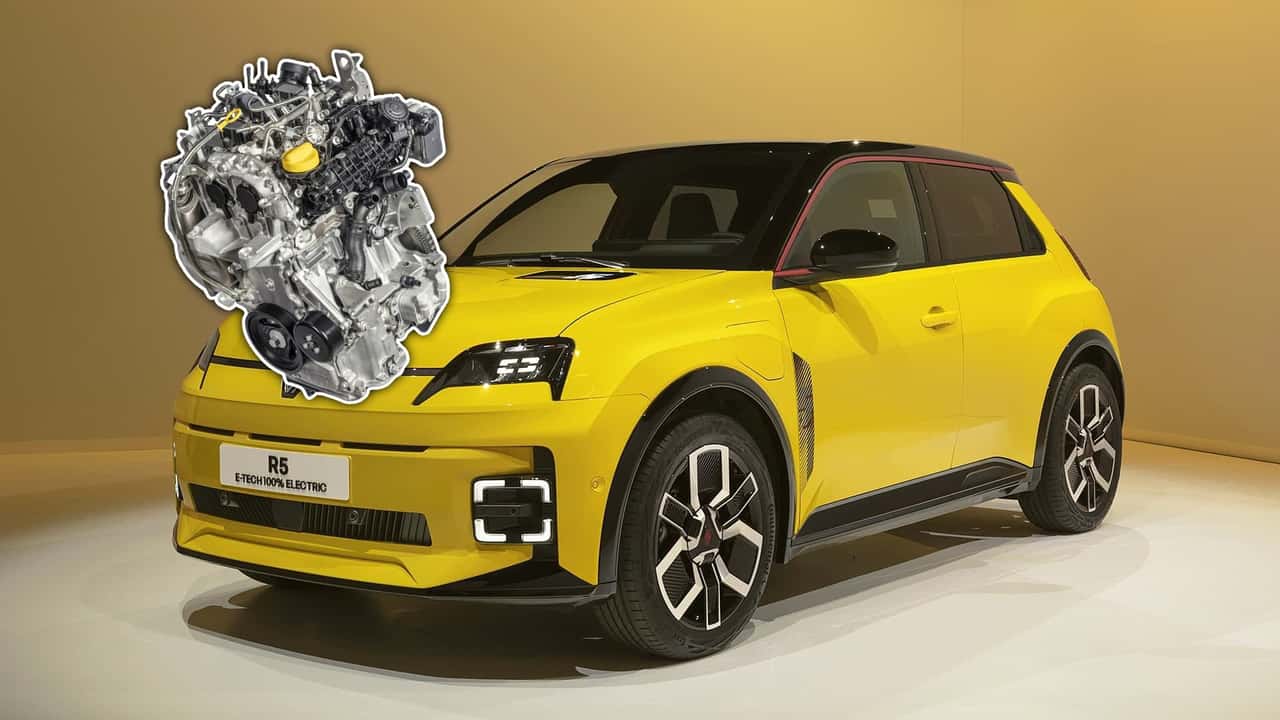Extended-range electric vehicles, or EREVs, are making a comeback, it seems. After Stellantis announced the rather beefy Ram 1500 Ramcharger for North America, Renault wants dibs on the tech on European soil.
The French company’s new powertrain spinoff, Horse, might actually have a winner on its hands, seeing how there’s currently no other viable competitor in the European Union after the discontinuation of the range-extended BMW i3 in 2022 (the range-extended Mazda MX-30 isn’t even a blip on sales charts). The toughening emissions laws should also be on Renault’s side. But will the tech be affordable and reliable enough for consumers to consider it against an all-electric car?
Get Fully Charged
EREVs aren’t new
Extended-range electric vehicles are making a comeback, thanks to Stellantis in the United States and now Renault in Europe. But the tech is anything but new, seeing how it has been used in locomotives for decades.
On paper, it all sounds great. Horse claims its system will be able to provide up to 124 miles (200 kilometers) of all-electric range on a full charge and up to 497 miles (800 km) with both the battery and the fuel tank full.
Thanks to a battery pack that can be up to 50% smaller in size compared to an all-out EV, the car should also be cheaper to build, at least in theory, leading to a lower purchase price for customers. A smaller battery also means fewer minerals need to be mined, and the ability to recharge the pack at home at potentially low energy rates faster than an EV should also be a bonus point.
There’s no word on how powerful the vehicles would be, with Horse only mentioning that passenger cars would get a 50-kilowatt generator to send juice to the battery, while commercial vehicles would be fitted with an 80-kW unit.
An EREV is similar to a plug-in hybrid, in the sense that there’s a combustion engine, an electric motor and a battery that can be recharged either via plugging it in a charger or through the gas engine. However, the big difference is that in the case of the EREV, the combustion engine doesn’t have a physical connection to the driven wheels. Instead, it only turns a generator that provides power to the battery and electric motor.
That’s how the upcoming Ram 1500 Ramcharger and the discontinued BMW i3 REV work, and it’s how Renault wants its upcoming plug-ins would work.

The engine Renault will use to power its range-extended models
As you may have noticed, there’s a gas engine-shaped elephant in the room that still burns fossil fuel and has harmful emissions, albeit less than a full-on ICE vehicle.
Horse says this solution is great for people needing to travel long distances and occasionally having to enter low-emissions zones. Renault’s EREV system has also been designed to “work across any existent vehicle architecture, whether designed for EVs or traditional combustion engines,” according to the powertrain spinoff. In other words, it would be fairly easy to adapt to existing vehicles, meaning customers wouldn’t have to wait years before seeing an EREV in a showroom.
Renault isn’t the only carmaker out there exploring hybridization as a stopgap toward full electrification. Even as all-electric car sales continue to grow, companies like Volkswagen, General Motors, Stellantis and Hyundai Motor Group said they’re looking at hybrids and plug-in hybrids as a temporary solution to spur sales as their initial expectations regarding EVs haven’t quite worked out.
Renault, the French automobile manufacturer, is making strides in the world of electric vehicles with its new spinoff brand, ’Horse’. The company aims to bring extended-range electric vehicles (EVs) to the European market, catering to consumers looking for a more sustainable and eco-friendly mode of transportation.
The Horse brand is set to launch its first model, the Horse Z10, later this year. The Z10 is a compact SUV with a range of up to 500 kilometers on a single charge, making it one of the longest-range electric vehicles on the market. This extended range will give consumers the confidence to travel longer distances without the need for frequent recharging, addressing one of the main concerns about EVs.
Renault’s Horse also aims to differentiate itself from other electric vehicle manufacturers by focusing on high-quality materials and luxurious design. The interior of the Z10 will feature premium materials and cutting-edge technology, providing a comfortable and stylish driving experience for consumers.
In addition to the Z10, Renault’s Horse is also planning to launch a range of electric vehicles across different segments, including sedans, hatchbacks, and crossovers. By offering a diverse lineup of electric vehicles, Horse aims to cater to a wider range of consumers and accelerate the transition to electric mobility in Europe.
Renault’s commitment to sustainability and innovation is evident in its efforts to bring extended-range EVs to the European market through the Horse brand. With the Z10 and other upcoming models, the company is poised to make a significant impact on the electric vehicle market and contribute to a greener future for transportation in Europe.

